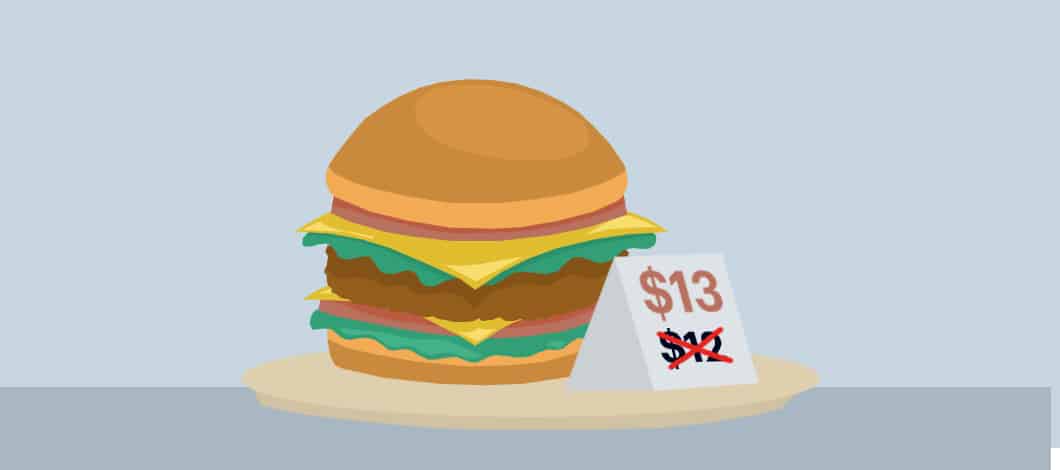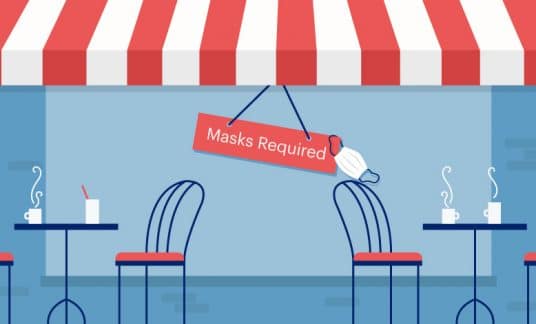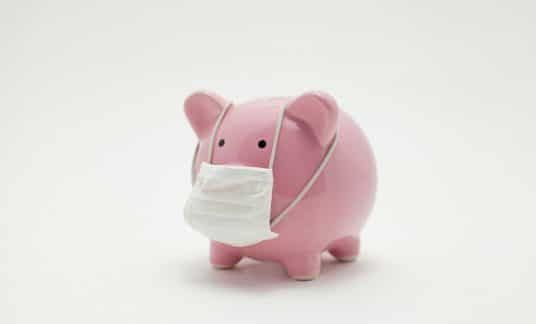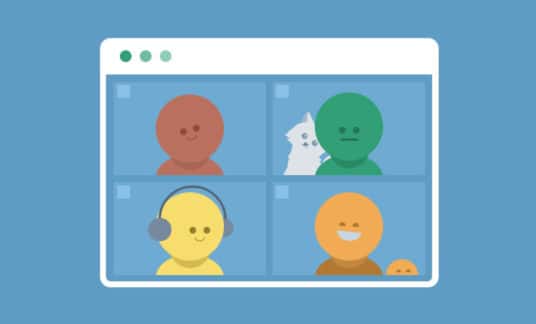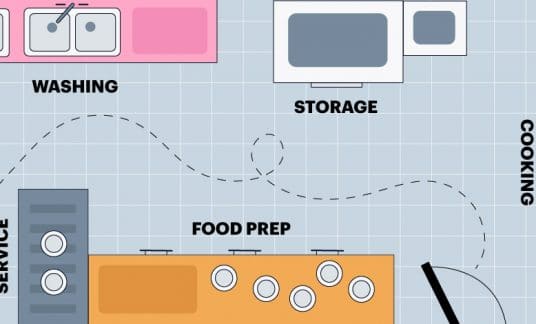Few small business owners look forward to changes that affect their bottom line. However, minimum wage hikes are inevitable, as 20 states haven’t raised them in 12 years. Learn about the impact of the minimum wage increase on restaurants, employees and consumers.
Also, explore 9 ways real restaurants meet and overcome the challenges.
Minimum Wage Increase: Impact on Restaurants
If you’re asking, “how will the minimum wage increase affect restaurants?” you aren’t alone. Wage increases and the potential elimination of the tip credit could hit small restaurant owners hard.
Indeed, the headlines are scary: job losses, hours cut and restaurant closures.
The “2019 Hospitality and Food Service Wage Inflation Survey” from Harri, a workplace management platform, provides details about restaurant operators who experienced state minimum wage increases:
- 45% saw “labor costs rise from 3% to 9%
- 26% had “labor increase from 9% to 15%
- 12% faced labor increases of more than 15%
Fortunately for restaurant owners, the bill to increase the federal minimum wage from $7.25 an hour to $9.50 in 2021 and $15 by June 2025 was shelved.
But after 12 years without a federal minimum wage increase, a hike of some sort seems possible.
Human capital management (HCM) software provider Paycor reports that 20 states increased the minimum wage in 2021, meaning most restaurant owners should prepare for restaurant minimum wage hikes.
What’s less clear is if the waiter and waitress minimum wage would increase or if the tip credit would be eliminated.
Because restaurants rely on a low server minimum wage to cover various job positions, scrapping the tip credit and raising the minimum wage to $15 may prove impossible for many food and beverage businesses.
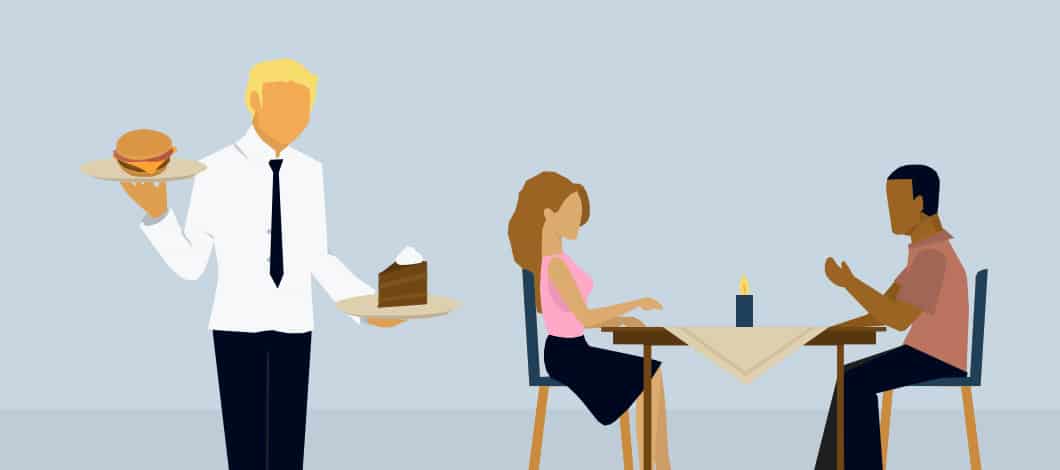
How Wage Hikes Affect Consumers
Although a Pew Research Center survey finds “67% of Americans support raising the minimum wage to $15 an hour,” they may not feel the same way about increasing menu prices.
A study of Yelp data by Michael Luca and Oren Reshef notes “a price increase of 1% leads to a decrease of 3% to 5% in the average rating.”
Consumers may ask, “will raising minimum wage raise food prices?” The answer is yes.
But menu prices are already increasing, thanks to inflation. According to the U.S. Bureau of Labor Statistics (BLS), the Consumer Price Index (CPI) rose “4.1% over the last 12 months” for full-service meals and 6.2% for limited-service meals.
As such, restaurateurs must juggle labor shortages and rising labor and food costs while appealing to guests concerned about menu pricing.
Minimum Wage for Restaurant Workers: The Impact of Increases
The BLS states the leisure and hospitality industry employs the “highest percentage of workers earning hourly wages at or below the federal minimum wage.”
In addition, “about three-fifths of all workers paid at or below the federal minimum wage were employed in this industry, almost entirely in restaurants and other food services.”
According to the Congressional Budget Office (CBO) report, “The Budgetary Effects of the Raise the Wage Act of 2021,” if the wage increased to $15 per hour by 2025, about 27 million people could see their income rise.
Although the number of people in poverty would decrease by 900,000, there also would be a job loss of 0.9%.
While restaurants can prepare for gradual minimum wage increases, coping with the potential loss of the tip credit is the real challenge.
The minimum wage for tipped employees is $2.13 per hour at the federal level, whereas 34 states have a minimum wage for waiters less than $5 an hour.
Yet the National Restaurant Association found “the median hourly earnings of entry-level servers is $19 per hour, while the median hourly earnings of more experienced servers is $25 per hour.”
Therefore, eliminating the tip credit hurts restaurant owners and tipped employees.
9 Ways Restaurants Handle Minimum Wage Increases
The “2019 Hospitality and Food Service Wage Inflation Survey” found that restaurant owners took the following steps when faced with higher labor costs:
- 64% decreased employee hours
- 43% terminated jobs
- 9% closed restaurant locations
- 71% increased menu prices
- 46% “reworked food and beverage offerings to reduce costs”
- 23% didn’t make any changes
According to the National Restaurant Association, if the minimum wage was raised to $9.50 an hour in 2021 (affecting 24 states with current minimum wages under $9.50), 84% said they’d cut employee hours and jobs while 98% said they’d raise their prices.
While the bill didn’t pass, food and labor costs are rising. Restaurants can take the following steps to prepare.
1. Create a Labor Scheduling Strategy
Take a look at foot traffic and your sales data to pinpoint timeframes for potential labor savings. For instance, you may need to reduce your business hours during unprofitable dayparts.
You could open later, close earlier or cut down to 6-days of business instead of 7.
Managers should use the point-of-sale (POS) system to track labor throughout the day and stick to a comfortable labor versus sales percentage that works for your restaurant.
2. Rework Food and Beverage Menus
Menu engineering can increase purchases of profitable menu items and highlight add-ons.
Talk with your food suppliers and see if they offer free or low-cost assistance, as many offer this service to restaurants in exchange for a purchasing contract with them.
If not, pull up sales data from your POS system and analyze the performance of each menu item.
Additionally, spend time developing a visually appealing menu that’s well-organized and uses menu psychology techniques.
3. Increase Menu Prices
Incremental menu price increases are a part of doing business. If you’ve recently raised rates, consider increasing the cost of high-volume items, such as soft drinks.
However, if you didn’t correctly price your menu initially, then it’s time to price your menu for profit.
You also may want to consider being transparent with your restaurant customers.
Zazie, a restaurant in San Francisco, is tip-free, and all their menus say, “All of our menu prices include a living wage, revenue share, paid family leave, fully funded health & dental insurance, paid time off and a 401(k) with employer match for all of our hard-working employees.”
4. Analyze and Optimize Inventory Costs
Moving to inventory management software can save on labor, ensure correct menu pricing and reduce theft or loss.
Using restaurant inventory management best practices may lower your prime costs. Get into a habit of regularly assessing the cost of your stock and making sure it matches your sales data.
In addition, speak with food and beverage distributors to find alternative products to high-priced items or negotiate better terms with a contract.
5. Cross-Train Restaurant Staff
Prime cost increases may result in a reduction in staff. However, you can cross-train employees to cover certain positions.
Doing so may help employees who want full-time hours but their job role doesn’t require it.
For example, a server or bartender may cross-train as a phone order taker or hostess. They also can complete basic food prep during a slow shift.
6. Invest in Labor-Saving Equipment
Evaluate your operations to see if equipment or software could speed up service or shorten prep hours.
Complete a return on investment (ROI) analysis on various software and equipment to see if potential labor savings offset the capital investment.
7. Pursue Additional Income Streams
Diversifying your business model is beneficial regardless of your current financial situation.
Consider adding new services or promoting existing ones, such as:
- Corporate catering and delivery
- Special event catering
- Rentable co-working spaces during off-hours
- Heat and serve meals
- Do-it-yourself (DIY) meal kits
8. Add a Surcharge or Service Fee
If the tip credit goes away, a surcharge may be the answer. Typically, restaurant owners opt for a variable service fee that’s a percentage of the receipt total.
You also may want to add a surcharge for delivery to cover the cost of third-party delivery services or to-go containers.
9. Get Involved in the Conversation
Here’s the thing, many factors affect the profit line for restaurants.
For wage increases to work, additional adjustments at the state or federal level may be required.
Potential changes could include regulating third-party delivery service fees or changes to the 80/20 rule for tipped employees, which requires employers to pay the full minimum wage if tipped workers spend more than 20% of their time on side work or nontipped duties.
Start by tracking minimum wage for tipped employees through the Department of Labor.
Then, consider adding your voice to the conversation by working with local small business groups, food suppliers and restaurant associations.
Act Now to Avoid Big Surprises
The movement towards livable wages for all employees isn’t going away.
Restaurants that gradually raise wages and menu prices now will be better prepared to navigate minimum wage increases.



